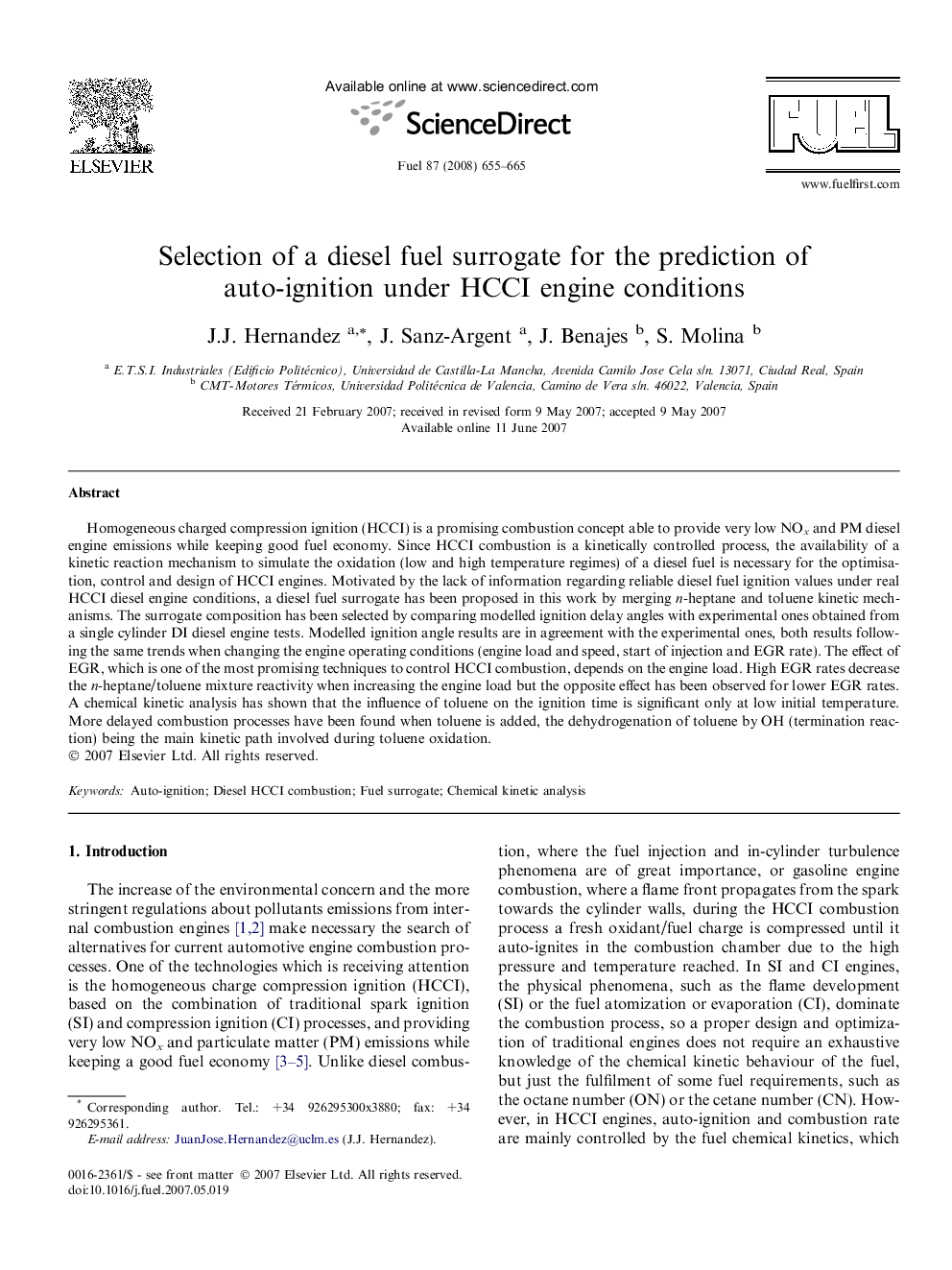| Article ID | Journal | Published Year | Pages | File Type |
|---|---|---|---|---|
| 207742 | Fuel | 2008 | 11 Pages |
Homogeneous charged compression ignition (HCCI) is a promising combustion concept able to provide very low NOx and PM diesel engine emissions while keeping good fuel economy. Since HCCI combustion is a kinetically controlled process, the availability of a kinetic reaction mechanism to simulate the oxidation (low and high temperature regimes) of a diesel fuel is necessary for the optimisation, control and design of HCCI engines. Motivated by the lack of information regarding reliable diesel fuel ignition values under real HCCI diesel engine conditions, a diesel fuel surrogate has been proposed in this work by merging n-heptane and toluene kinetic mechanisms. The surrogate composition has been selected by comparing modelled ignition delay angles with experimental ones obtained from a single cylinder DI diesel engine tests. Modelled ignition angle results are in agreement with the experimental ones, both results following the same trends when changing the engine operating conditions (engine load and speed, start of injection and EGR rate). The effect of EGR, which is one of the most promising techniques to control HCCI combustion, depends on the engine load. High EGR rates decrease the n-heptane/toluene mixture reactivity when increasing the engine load but the opposite effect has been observed for lower EGR rates. A chemical kinetic analysis has shown that the influence of toluene on the ignition time is significant only at low initial temperature. More delayed combustion processes have been found when toluene is added, the dehydrogenation of toluene by OH (termination reaction) being the main kinetic path involved during toluene oxidation.
